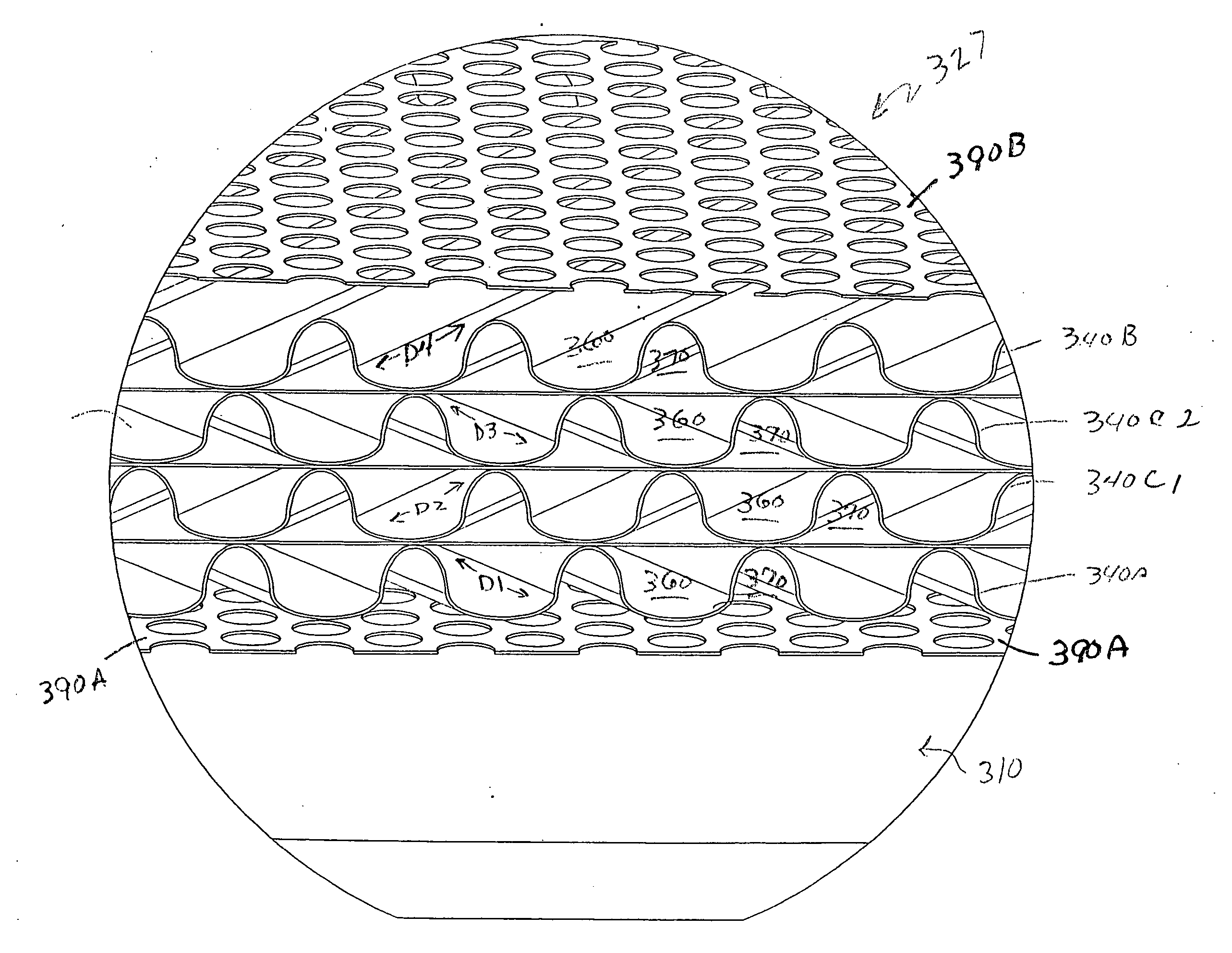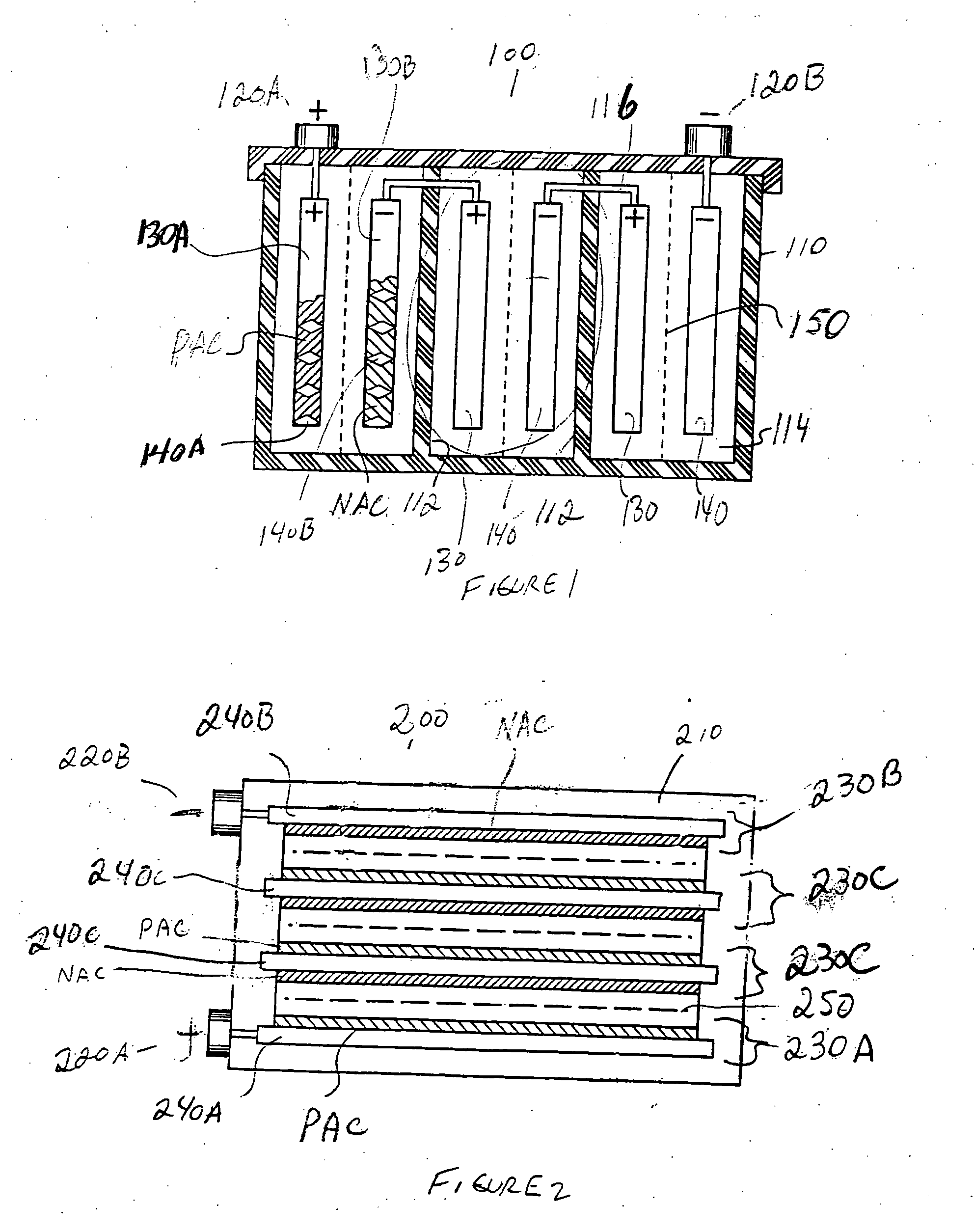Bipolar battery
a battery and bipolar technology, applied in the field of batteries, can solve the problems of structural disordered nickel hydroxide materials, difficulty in achieving requirements for high-quality multi-cell rechargeable batteries,
- Summary
- Abstract
- Description
- Claims
- Application Information
AI Technical Summary
Benefits of technology
Problems solved by technology
Method used
Image
Examples
example
[0145] An example of a bipolar battery of the present invention is a nickel-metal hydride bipolar battery. The bipolar battery is formed using a positive electrode, a negative electrode and fourteen (14) bipolar electrodes that form a total of 15 electrochemical cells. Each of the electrodes are formed for corrugated substrates. The positive channels have a cross sectional surface area which is greater than that of the negative channels. Each of the substrates is in the form of a pure nickel foil. The thickness of the foil is approximately 5 mils. The battery uses both positive and negative current collectors formed from pure copper. The bipolar battery uses either the substrate TYPE_A shown in FIG. 13 or the substrate TYPE_B shown in FIG. 14. The substrate TYPE_A and the substrate TYPE_B are alternatingly stacked. Hence, the substrate TYPE_A is used as the positive electrode substrate, TYPE_B as the first bipolar substrate, TYPE_A as the second bipolar substrate and so on. (Of cour...
PUM
| Property | Measurement | Unit |
|---|---|---|
| thickness | aaaaa | aaaaa |
| width | aaaaa | aaaaa |
| height Hch | aaaaa | aaaaa |
Abstract
Description
Claims
Application Information
 Login to View More
Login to View More - R&D
- Intellectual Property
- Life Sciences
- Materials
- Tech Scout
- Unparalleled Data Quality
- Higher Quality Content
- 60% Fewer Hallucinations
Browse by: Latest US Patents, China's latest patents, Technical Efficacy Thesaurus, Application Domain, Technology Topic, Popular Technical Reports.
© 2025 PatSnap. All rights reserved.Legal|Privacy policy|Modern Slavery Act Transparency Statement|Sitemap|About US| Contact US: help@patsnap.com



